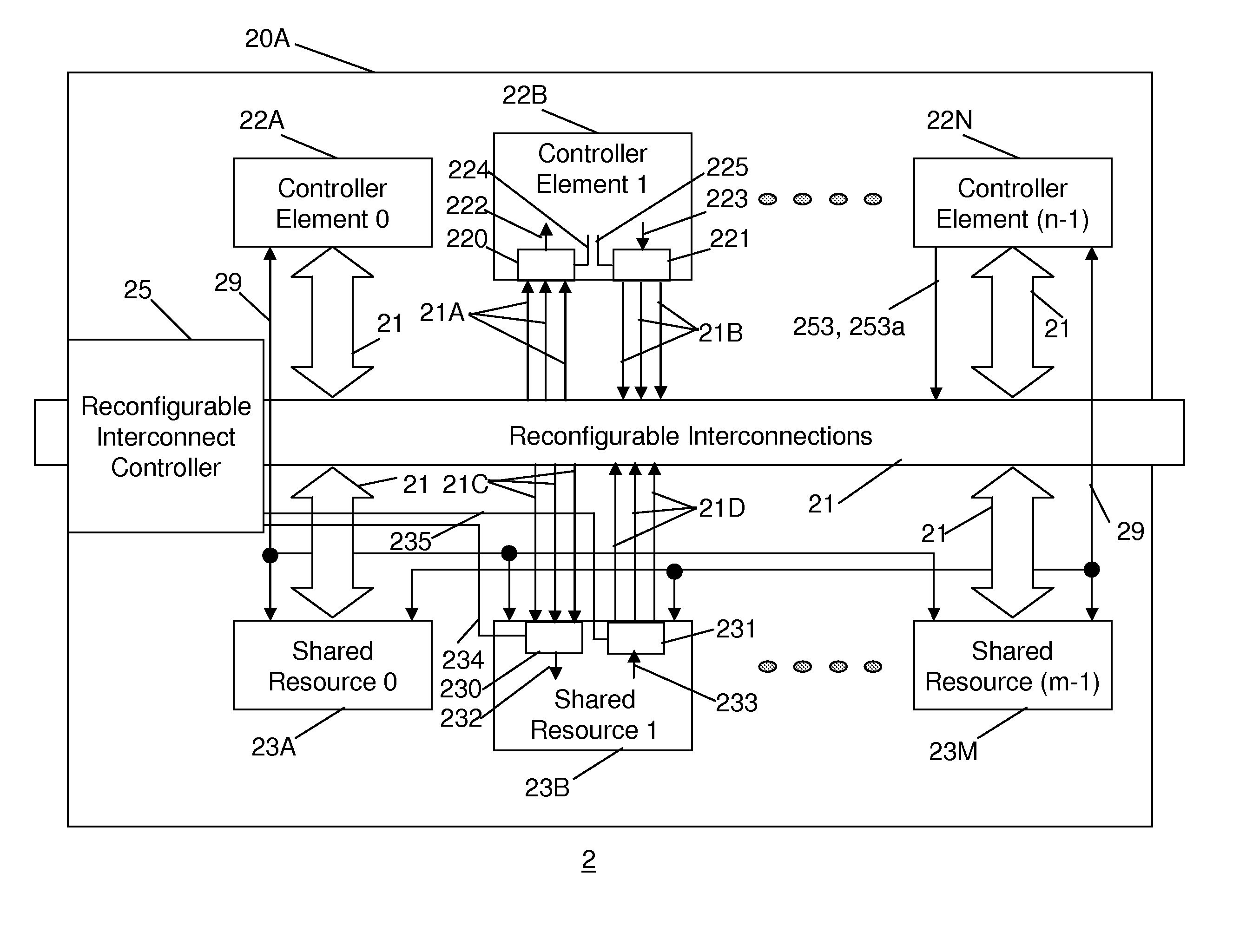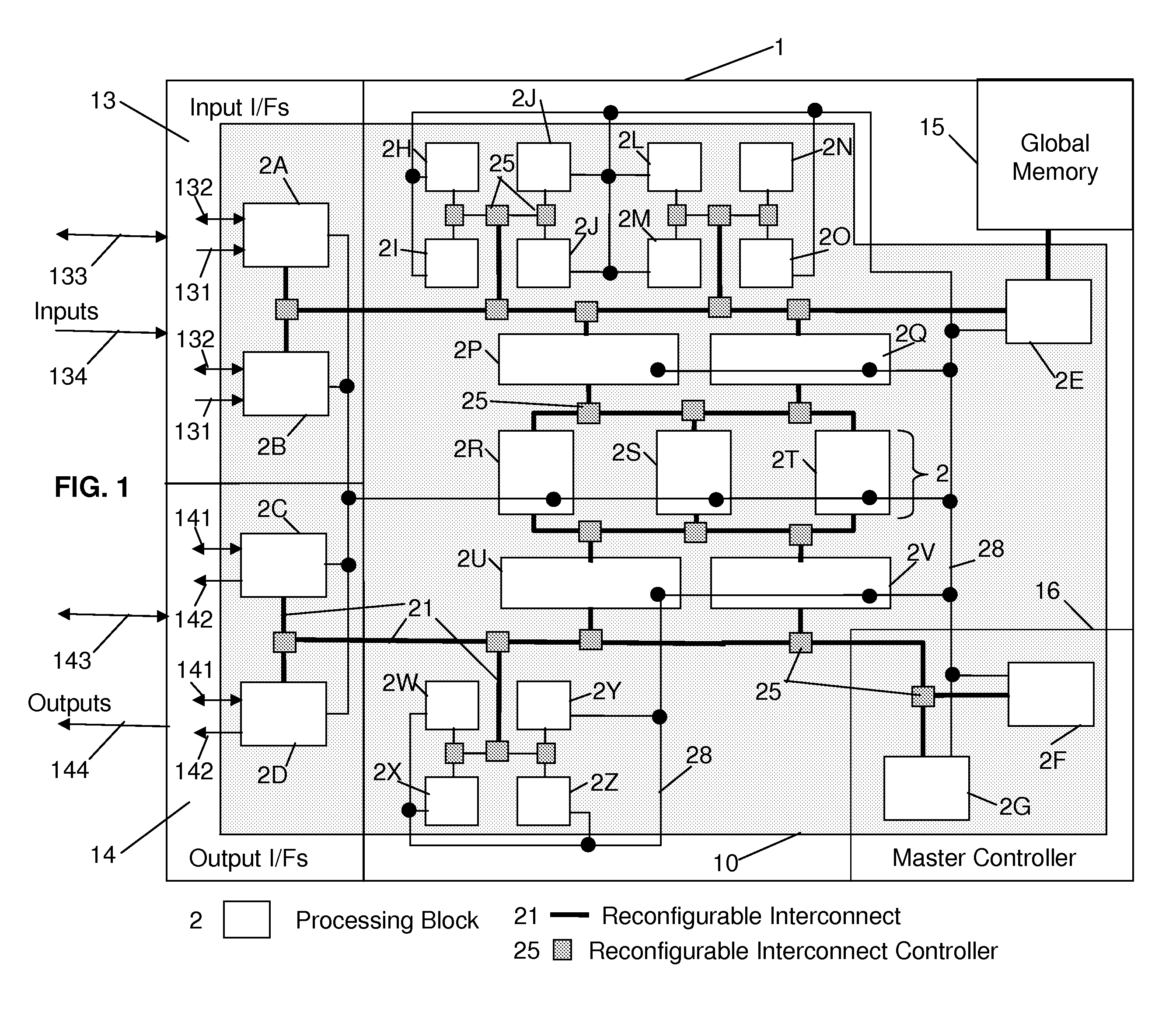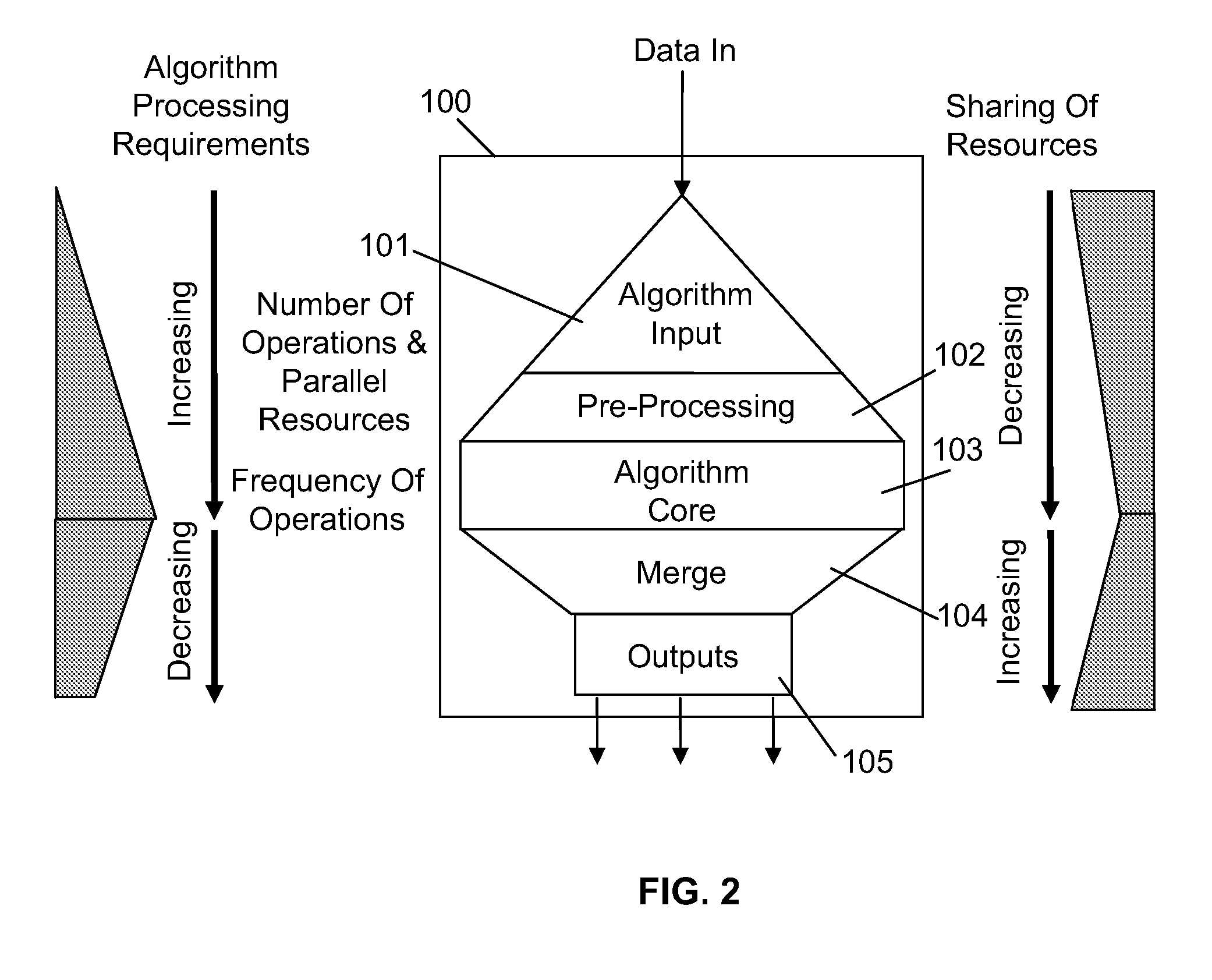Reconfigurable integrated circuit
a technology of integrated circuits and integrated circuits, applied in the direction of specific program execution arrangements, program control, sustainable buildings, etc., can solve the problems of increasing the difficulty of selecting the right functionality-cost mix, increasing the requirement of end customers for more sophisticated feature sets, and requiring an enormous amount of additional processing power
- Summary
- Abstract
- Description
- Claims
- Application Information
AI Technical Summary
Benefits of technology
Problems solved by technology
Method used
Image
Examples
Embodiment Construction
[0052]FIG. 1 shows a preferred embodiment of the present invention. The apparatus 10, referred to herein as a Reconfigurable Resource Core (“RRC”) 10, is preferably embodied as an integrated circuit 1, or as a portion of an integrated circuit having other components, such as memory 15 and or an embedded RISC core (not shown). The RRC 10 comprises one or a plurality of processing blocks 2, labelled as 2A through 2Z in FIG. 1 (individually and collectively referred to as processing blocks 2). The processing blocks 2 can communicate via reconfigurable interconnect 21. The reconfigurable interconnect 21 represents a group of buses. There is at least one bus per processing element 23 and a processing element 23 can have a plurality of output buses and individual signals. The processing element's output buses are collectively known as the reconfigurable interconnect 21. Specific routing selections are determined by the reconfigurable interconnect controllers 25. Data transferred between t...
PUM
 Login to View More
Login to View More Abstract
Description
Claims
Application Information
 Login to View More
Login to View More - R&D
- Intellectual Property
- Life Sciences
- Materials
- Tech Scout
- Unparalleled Data Quality
- Higher Quality Content
- 60% Fewer Hallucinations
Browse by: Latest US Patents, China's latest patents, Technical Efficacy Thesaurus, Application Domain, Technology Topic, Popular Technical Reports.
© 2025 PatSnap. All rights reserved.Legal|Privacy policy|Modern Slavery Act Transparency Statement|Sitemap|About US| Contact US: help@patsnap.com



